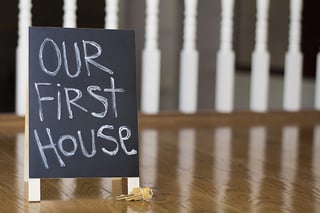
As a long-term investment, it makes sense to start building a property portfolio as early in life as possible, but with prices as high as they are in many parts of South Africa, getting that first foot in the door can be a daunting prospect.
“It’s a myth that you have to be old or rich to start a property investment portfolio,” says Bill Rawson, Chairman of the Rawson Property Group and a highly-respected real estate investor in his own right. “Having capital available certainly makes things simpler, but there are plenty of ways young professionals with determination can kick off a property portfolio from a relatively early age.”
One of the more common ways to breach the affordability barrier for first-time purchasers, says Rawson, is to team up with friends or family and make a joint purchase.
“Few young people can afford the full bond repayments on an investment property in addition to their existing expenses,” he explains, “but paying half or a third of that bond might be manageable – particularly if the property can generate decent rental income.”
Choosing that first investment property wisely is vital to the success of your future portfolio, however, regardless of whether you’re sharing the expense with co-investors.

“A solid first investment forms the foundation – and often financing – for subsequent purchases,” says Rawson. “That makes it extremely important to do your research well before settling on a property.”
The good news is that statistics released by FNB show that smaller properties have shown consistently higher appreciation than their medium and large counterparts since 2010. Sectional title properties also continue to outperform freehold homes, putting paid to any rumours that profitable investment properties have to cost a fortune.
“One and two-bedroomed apartments make excellent starter investments,” says Rawson, “provided you choose your area carefully, and do a thorough check into the development’s management history. Aim for a neighbourhood that is either just starting to show promise, or buy into an existing rental hotspot. The former offers potentially higher capital appreciation, but the latter might provide better immediate rental returns.”
When it comes to expanding an investment portfolio, however, rental returns seldom provide sufficient capital on their own. Rather, Rawson suggests concentrating on using rental income to pay off your bond and enhance your property’s value if possible.
“It’s always a good idea to put extra cash into your bond to decrease the overall cost of your financing,” says Rawson, “but if you’re looking to expand your portfolio quickly, consider adding value to your property as well.”
Value can be added either directly, through renovations and improvements, or happen organically as a result of positive market trends and appreciation over time. Either way, having a property that is worth more than when you originally mortgaged it opens the door for a new potential source of finance: a second bond.
“A second bond allows you to borrow the difference between the price of your property at date of purchase and its current value – at the discretion of your bank, of course,” says Rawson. “For example, if you bought your house for R1 million and it’s now worth R1.5million, you could potentially borrow another R500k. That could go a long way towards financing the purchase of a second property, using your first property as low-risk collateral.”
This kind of cross-subsidisation, says Rawson, is vital to growing a property portfolio, and becomes easier as your investments mature.
“The first few purchases are always the most difficult” he says, “particularly as a young person at the beginning of your career trajectory. The trick is to start small, but start strong, and don’t be afraid to ask for advice. The potential for growth is substantial, but there is risk involved as well and you need to make sure you’re informed of all the possibilities.”